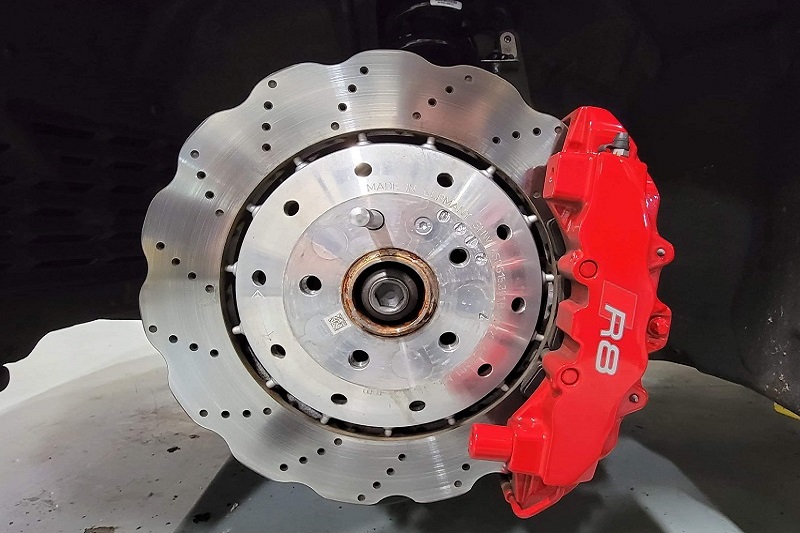Brake Pads & Rotors

BRAKE SERVICES
Whether it be your daily driver or weekend track vehicle, we've got you covered. Everything from simple tasks like replacing your pads and rotors, to more complicated services like resurfacing/machining your brake rotors, flushing your brake fluid system, upgrading your brakes, and even fabricating new brake lines can be done here in our shop! Ask your service advisor for options between OEM solutions, upgraded solutions for better performance, or even budget-friendly aftermarket options.MAKE AN APPOINTMENT
Brake Pads & Rotors
How do I know when my brakes need replaced?
There are several signs that indicate brakes may need to be replaced on a vehicle. Here are a few things to look out for…
If the brake pedal feels soft or spongy, this may indicate that the brake pads are worn down and need to be replaced.
If the brakes make a grinding or squeaking noise, it may mean that the brake pads are worn down to the point where the metal backing on the pads are making contact with the brake rotors.
If the vehicle pulls to one side when the brakes are applied, it may indicate that the brake pads on one side are more worn than the other.
More modern cars have a brake warning light on the dashboard. If this light comes on, don’t prolong it. While this could be a simple repair, you may not know if something more serious is going on.
If any of these signs are present or you’re just not sure what condition your brakes are in, set up an appointment with our service department for an in-depth, affordable brake inspection.
Why is it important to flush my brake fluid system?
Flushing brake fluid removes contaminants that reduce its effectiveness and can cause corrosion, increasing stopping power and preventing costly repairs. It is recommended to flush brake fluid every 2-3 years to maintain optimal performance and ensure safety.
What does it mean to machine or ‘turn’ your brake rotors?
Machining brake rotors involves resurfacing the brake rotors to remove any irregularities or imperfections on the surface of the rotor. This process involves using a brake lathe to cut a thin layer off the surface of the rotor, creating a smooth and even surface that ensures maximum contact and friction with the brake pads. Machining can help restore the performance of worn or damaged brake rotors and prolong their lifespan. However, it is important to note that rotors can only be machined to a certain extent before they become too thin and need to be replaced altogether.